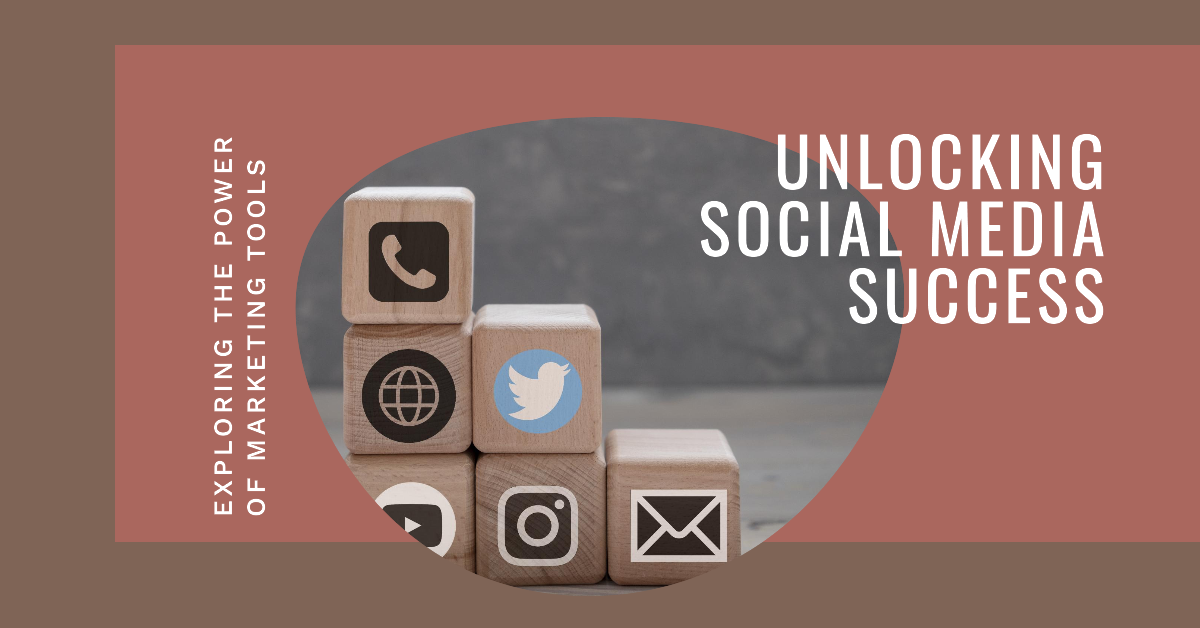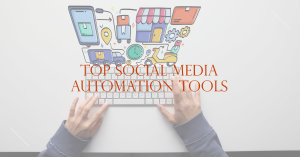Introduction
Social media marketing has become an essential part of any digital marketing strategy, with businesses of all sizes using it to reach their target audience, increase brand awareness, and drive conversions. There are numerous tools available that can help enterprises to manage and optimise their social media campaigns effectively. These tools generally fall into two categories: free and paid. The question often arises is, “Are paid social media marketing tools better than free ones?” This article will explore the pros and cons of paid and free social media marketing tools, helping you determine which option best suits your business needs.
The Role of Social Media Marketing Tools
Before diving into the comparison, it’s essential to understand the role that social media marketing tools play in a business’s marketing efforts. These tools help marketers streamline tasks such as content scheduling, social listening, analytics, reporting, and even running paid social media ad campaigns. Whether free or paid, these tools aim to make social media marketing more efficient and effective, allowing marketers to focus on strategy and creative content rather than manual tasks.
The Pros and Cons of Free Social Media Marketing Tools
Free social media tools are readily available and offer several basic functionalities that can benefit small businesses or startups with limited budgets. However, there are limitations to consider.
Pros of Free Social Media Tools:
- Cost-Effective: The most significant advantage of using free tools is that they come at no cost, making them ideal for startups, small businesses, and individual marketers who need to keep expenses low.
- Basic Features for Beginners: Free tools often offer a range of basic features that are sufficient for those new to social media marketing. They can help businesses schedule posts, monitor basic engagement metrics, and manage a few social media accounts.
- Trial for Paid Versions: Some free tools offer limited versions of their paid counterparts, allowing businesses to test out the platform’s capabilities before committing to a subscription.
- Easy to Use: Since they focus on basic functionalities, free tools are often more straightforward to use, requiring little to no learning curve.
Cons of Free Social Media Tools:
- Limited Features and Capabilities: Free tools typically have limited functionality, lacking advanced features such as in-depth analytics, bulk scheduling, and social listening. This limitation can hinder a business’s ability to execute comprehensive social media strategies.
- Restricted Access: Many free tools only allow access to one or two social media accounts, which can be a problem for businesses that operate across multiple platforms.
- Ads and Branding Limitations: Some free tools may include ads or watermarks in the content, reducing the professionalism of your brand’s social media presence.
- Lower Priority for Customer Support: Free tools often come with minimal customer support, leaving users to figure out solutions to any issues they encounter.
The Pros and Cons of Paid Social Media Marketing Tools
Paid social media tools come with a subscription fee but offer a wealth of advanced features and functionalities that can greatly benefit larger businesses or those serious about scaling their social media marketing efforts.
Pros of Paid Social Media Tools:
- Advanced Features and Functionalities: Paid tools offer more robust features such as social listening, advanced analytics, automated reporting, and multi-platform integration. These capabilities provide businesses with a deeper understanding of their audience and social media performance.
- Better Account Management: With paid tools, businesses can manage multiple social media accounts seamlessly, making it easier to maintain a consistent online presence across different platforms.
- Access to Premium Support: Most paid tools provide priority customer support, ensuring that users can quickly resolve any issues they encounter.
- Customization Options: Paid tools often allow for customization in reporting, dashboards, and other aspects of the user experience, enabling businesses to tailor the tool to their specific needs.
- Enhanced Security and Reliability: Paid tools usually offer more reliable service and advanced security features to protect your data.
Cons of Paid Social Media Tools:
- Cost: The most significant drawback of paid tools is the cost. While they offer advanced features, the subscription fees can be high, making them less accessible for small businesses with limited budgets.
- Learning Curve: Some paid tools can be complex to use and may require training to understand all the features and maximize the tool’s potential.
- Overpaying for Unused Features: Businesses may end up paying for features they don’t use, leading to wasted resources. It’s crucial to assess whether all the features in a paid tool will be valuable for your marketing strategy.
Key Differences Between Paid and Free Social Media Tools
To understand whether paid social media marketing tools are better than free ones, it’s essential to compare them based on different factors:
1. Features and Functionalities
Paid tools undoubtedly offer more features and advanced capabilities. For example, tools like Hootsuite, Sprout Social, or SEMrush provide comprehensive analytics, automated reporting, and social listening capabilities. Free tools such as Buffer’s free version or TweetDeck might only cover the basics, such as scheduling and limited analytics.
2. Scalability
Paid tools are better suited for scaling social media marketing efforts, as they can handle multiple accounts, larger volumes of content, and more advanced strategies. Free tools are typically designed for smaller-scale operations, making it difficult to scale without encountering limitations.
3. Customer Support
With paid tools, you usually receive better customer support, including one-on-one training sessions or dedicated support teams. Free tools often provide limited support, such as FAQs and community forums, leaving users to troubleshoot issues on their own.
4. Data and Analytics
Paid tools offer more in-depth data analysis and reporting features. For instance, they can provide detailed audience insights, track conversions, and measure ROI. Free tools typically offer basic engagement metrics, which may not be sufficient for businesses that need a comprehensive view of their social media performance.
When to Use Free Social Media Marketing Tools
Free social media tools can be a good option in the following scenarios:
- Budget Constraints: If you’re a small business or a startup with a tight budget, free tools can help you get started with social media marketing without any financial burden.
- Basic Social Media Needs: If your social media strategy is relatively simple and does not require advanced features, free tools can be sufficient for scheduling posts and monitoring basic metrics.
- Testing the Waters: If you’re new to social media marketing, starting with free tools can give you an idea of what features you might need from a paid tool in the future.
When to Invest in Paid Social Media Marketing Tools
Paid social media tools are worth the investment if:
- You Need Advanced Features: If your social media marketing strategy requires in-depth analytics, social listening, or multi-account management, investing in a paid tool will provide the necessary capabilities.
- You’re Managing Multiple Platforms: Paid tools allow you to manage multiple accounts across different platforms, making them ideal for businesses that want to maintain a cohesive online presence.
- Scalability Is a Priority: If your business is growing and you need a tool that can scale with your increasing needs, a paid tool will likely be the best option.
- You Value Data-Driven Decisions: Businesses that rely heavily on analytics to drive their marketing strategies will benefit from the advanced reporting and data analysis features of paid tools.
Examples of Popular Free and Paid Social Media Tools
To illustrate the differences between free and paid social media tools, let’s look at some popular options:
Free Tools:
- Buffer (Free Version): Allows basic scheduling for a few accounts, with limited analytics.
- Hootsuite Free Plan: Offers scheduling and basic analytics for up to three accounts.
- TweetDeck: Free tool for managing Twitter accounts, with basic functionality.
Paid Tools:
- Sprout Social: Offers comprehensive social media management features, including advanced analytics and social listening.
- Canva Pro: Paid version includes premium design elements, advanced editing features, and content planning.
- Agorapulse: Provides robust scheduling, social listening, and detailed reporting capabilities.
Conclusion
So, are paid social media marketing tools better than free ones? The answer largely depends on your specific business needs and budget. For small businesses or those just starting, free tools can provide the basic functionalities to manage social media accounts effectively. However, as your business grows and your social media strategy becomes more sophisticated, investing in paid tools may become necessary to achieve better results.
Paid social media tools offer advanced features, scalability, and detailed analytics that can significantly enhance your marketing efforts. They enable businesses to make data-driven decisions, streamline workflows, and maintain a consistent presence across multiple platforms. While free tools can be suitable for beginners or budget-conscious marketers, paid tools often provide the depth and capabilities required to fully optimize a social media strategy.
Ultimately, the best approach may involve starting with free tools to get a feel for social media marketing and gradually transitioning to paid options as your needs grow. This way, you can maximize your investment and ensure that the tools you choose align with your long-term goals.
Some links in this article may be affiliate links, meaning they could generate compensation to us without any additional cost to you should you choose to purchase a paid plan. These are products we have personally used and confidently endorse. It’s important to note that this website does not offer financial advice. You can review our affiliate disclosure in our privacy policy for more information.




